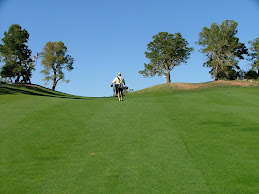2006 was a most magnetic and perhaps watershed year on the PGA Tour. You could say it was all about Tiger and Phil. Tiger Woods missed the cut at the U.S. Open, his first missed cut in a major championship as a professional, albeit because of the passing of his father less than two months prior. But then he roared back with convincing wins at The Open and the PGA Championship reestablishing his dominance. At that same U.S. Open we witnessed disaster after disaster on the final hole with the grand finale being Mickelson. Just when you thought he was going to win his third straight major Lefty self-destructed. Alas, it was also the final year that the Official Money List carried any significant meaning at least as far as the PGA Tour Commissioner declared.
But along the way there were a multitude of other memoirs, heart-warming or tear-jerking and encouraging or repressing. These were the sagas you seldom read about in the media. These were the stories that might influence someone to take up the game or the tales of the ups and downs of the traveling troupe known as the PGA Tour as it traversed the country. These were the happenings of the human part of their existence.
To engage us with the statistical maze is commonplace. To capture the humanity of that year in words is a wonderful triumph. And that is precisely what Chris Lewis has done with his new offering The Scorecard Always Lies published by Free Press. It is not a statistical junket through the year on the PGA Tour relating all the meaningless numbers that are forgotten when the next season commences. Rather, it is a human interest narration. The Scorecard… presents us with entertaining and seldom expressed back stories of well-known players (Mickelson and Woods) and lesser known players such as Michael Allen and Robert Garrigus. It takes us behind the scenes of the tournaments. Lewis will break your heart from the beginning with his account of Stuart Appleby’s relationship with his wife Renay and her untimely death.
The Scorecard… also takes us through the biennial media spectacle known as the Ryder Cup with some fascinating and revealing insider information. Lewis also chronicles the emergence and the rise to prominence of the Stack & Tilt teaching gurus Andy Plummer and Mike Bennett. It is interesting to observe what motivates a very good golfer to undertake a completely different swing theory in an effort to improve further. Lewis examines this motivation.
There appear to be a couple of historical inaccuracies – like twice stating that Payne Stewart’s putt on the final green at Pinehurst in 1999 was 40 feet. (It was more in the fifteen foot range, I believe) And there are also a couple of grammatical and typographical oversights. Nevertheless, the avid golf fan will find this volume most captivating with its unusual revelations of life on the PGA Tour. The average golf fan will enjoy the human interest perspective.
Subscribe to:
Post Comments (Atom)


No comments:
Post a Comment